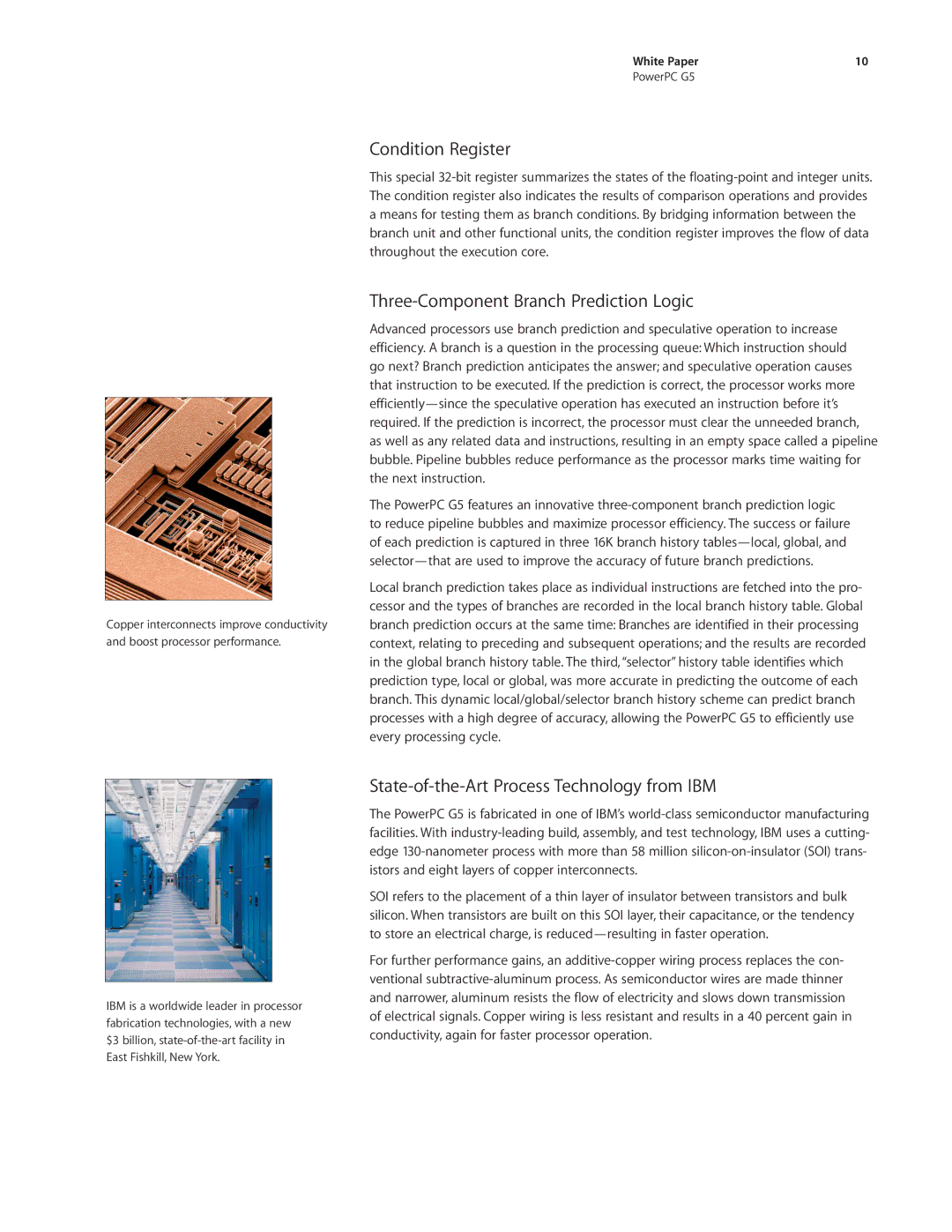
Copper interconnects improve conductivity and boost processor performance.
White Paper | 10 |
PowerPC G5
Condition Register
This special
Three-Component Branch Prediction Logic
Advanced processors use branch prediction and speculative operation to increase efficiency. A branch is a question in the processing queue: Which instruction should go next? Branch prediction anticipates the answer; and speculative operation causes that instruction to be executed. If the prediction is correct, the processor works more
The PowerPC G5 features an innovative
Local branch prediction takes place as individual instructions are fetched into the pro- cessor and the types of branches are recorded in the local branch history table. Global branch prediction occurs at the same time: Branches are identified in their processing context, relating to preceding and subsequent operations; and the results are recorded in the global branch history table. The third, “selector” history table identifies which prediction type, local or global, was more accurate in predicting the outcome of each branch. This dynamic local/global/selector branch history scheme can predict branch processes with a high degree of accuracy, allowing the PowerPC G5 to efficiently use every processing cycle.
IBM is a worldwide leader in processor fabrication technologies, with a new $3 billion,
State-of-the-Art Process Technology from IBM
The PowerPC G5 is fabricated in one of IBM’s
SOI refers to the placement of a thin layer of insulator between transistors and bulk silicon. When transistors are built on this SOI layer, their capacitance, or the tendency to store an electrical charge, is
For further performance gains, an
